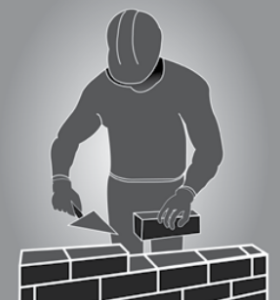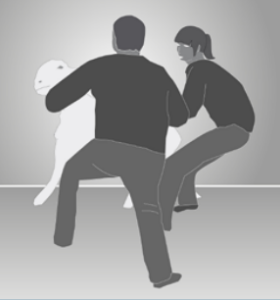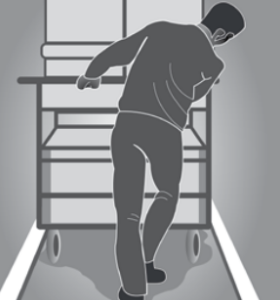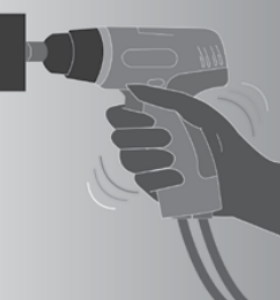Hazardous Manual Tasks
This page provides a general outline of the risk management approach for controlling hazardous manual tasks at the University.
Manual tasks are those that require you to push, pull, lift, carry, move, hold or lower any object, person or animal. Manual tasks also include those that have repetitive actions (including typing at a computer workstation), sustained postures and may involve exposure to vibration when using certain powered equipment.
Local workplaces must identify any manual tasks that have the potential to be hazardous, assess the level of risk and control measures required to eliminate injury or minimise the severity of injury. Refer to the Work Health and Safety Procedures and Guidelines – Managing Workplace Health and Safety Risks and Hazardous Manual Tasks. Details of hazards and their risk control measures must be recorded on the local WHS01 Hazard Register and regularly reviewed.
Types of hazardous tasks
Not all manual tasks are hazardous. A manual task becomes hazardous when it involves one or more of the following:
Repetitive force - using force repeatedly over a period of time to move or support an object, for example:
- Lifting and stacking goods onto a pallet
- Repetitively pressing components with the thumbs or other part of the hand to assemble an item
- Prolonged application of therapeutic massage treatments
High or sudden force - using force repeatedly over a period of time that is described as physically demanding and requires assistance due to the effort required:
- Lifting, lowering or carrying an object that cannot be positioned close to the body
- Restraining a person or animal
- Pushing or pulling an object that is hard to move or stop
Repetitive movement - using the same parts of the body to repeat similar movements over a period of time i.e. computer-based work
- Typing and other keyboard tasks
- Repeatedly reaching for and assembling components in electronics manufacturing
- Using a socket and ratchet or spanner to unscrew long bolts
Sustained or awkward posture - where any part of the body is in an uncomfortable or unnatural position
- Squatting while servicing plant or a vehicle
- Working with arms overhead
- Bending the neck or back to the side to see around bulky items pushed on a trolley
Vibration - when vibration is transferred through a vibrating tool, steering wheel or controls in heavy machinery to the hand and arm
- Using impact wrenches, chainsaws, jackhammers, grinders, drills or vibrating compacting plates.
Risk management
Examples of control measures (in order of control hierarchy):
- Consider potential hazards at the design stage of plant, equipment, chemicals and work processes
- Automate the manual task (such as using remote controls, powered equipment)
- Deliver goods directly to the point of use to eliminate multiple handling
- Replace heavy items with those that are lighter, smaller and/or easier to handle
- Replace hand tools with power tools to reduce the level of force required to do the task
- Isolate vibrating machinery from the user, for example by providing fully independent seating on mobile plant
- Isolate noisy machinery from the user, enclose the machinery where possible
- Use mechanical lifting aids
- Provide workstations that are height adjustable
- Rotate workers between different tasks
- Train workers to use control measures implemented when carrying out normal tasks
- Heat resistant gloves for handling hot items
- Shock absorbent shoes for work on hard concrete floors
Please note: The following forms are updated frequently. Please access the forms from this page and do not store a local copy to avoid using outdated forms.
Forms
Procedures
Guidelines
References and resources




